
I've been daydreaming about this flavour combo for weeks. Basically as soon as the weather started to turn rainy and kind dreary (i.e. end of September here), I wanted to make something with hazelnuts and orange and cinnamon because those are the flavours of fall! Warm and spicey and nutty with a little kick of citrus to make sure you're not falling asleep. It's not winter just yet, so we still need a little pep in our step. Also, the colours just seem to scream "Aaaaaah FALL!!" to me - orange, golden brown, cinnamon brown. I went out and collected a bunch of wet leaves off the pavement in the rain just for this shoot, to complete the fall look. That's dedication, guys.


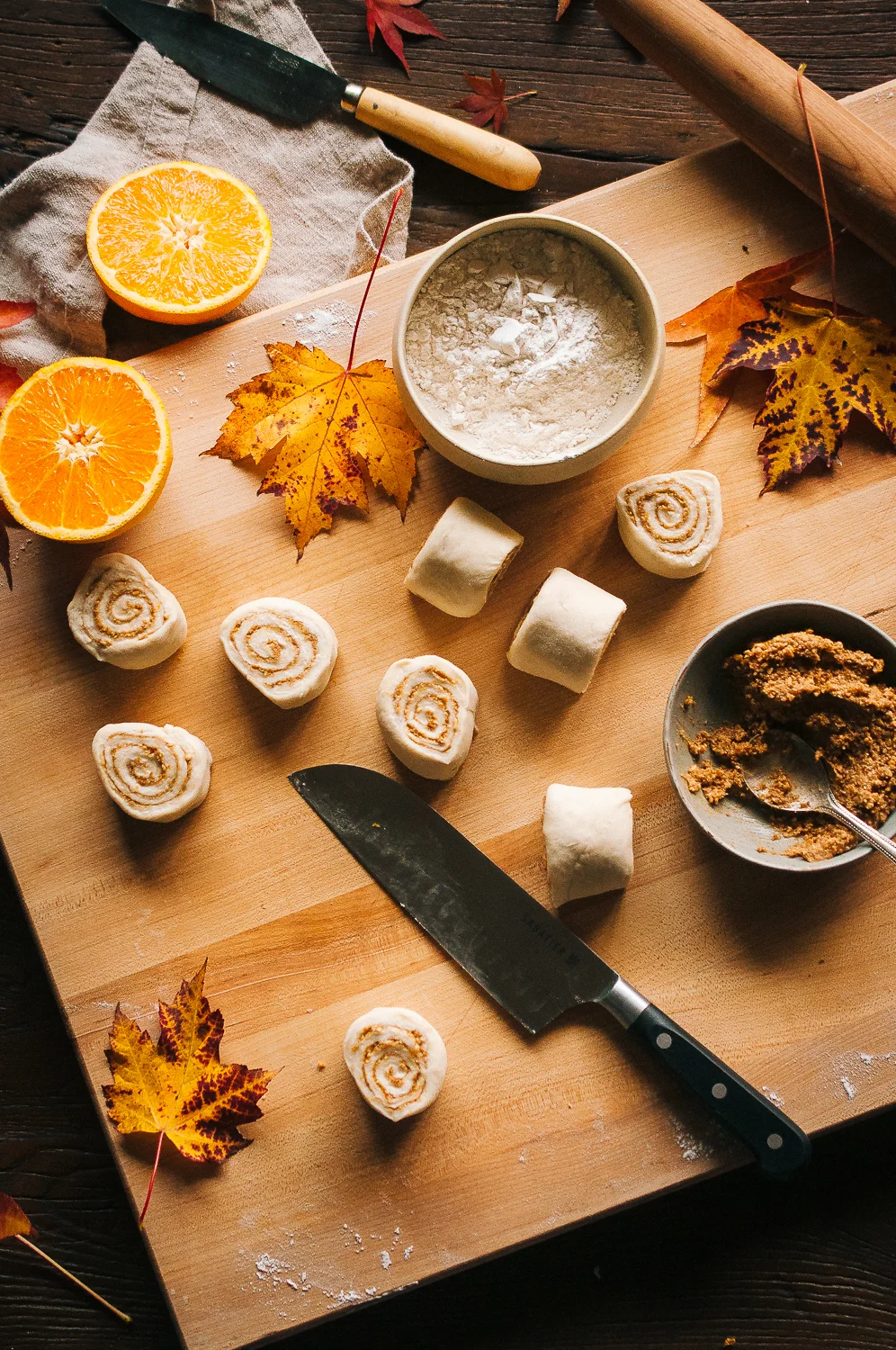
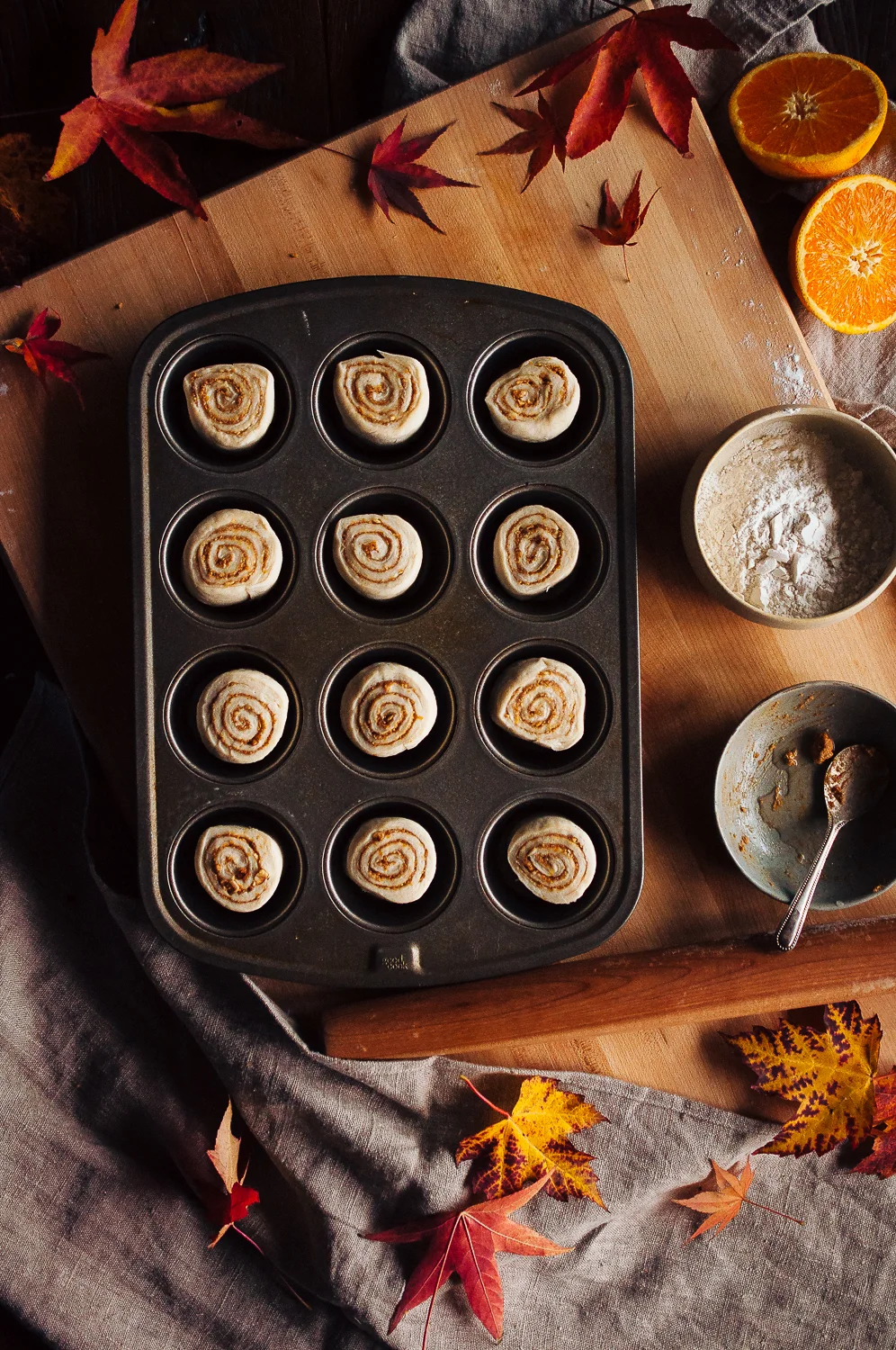
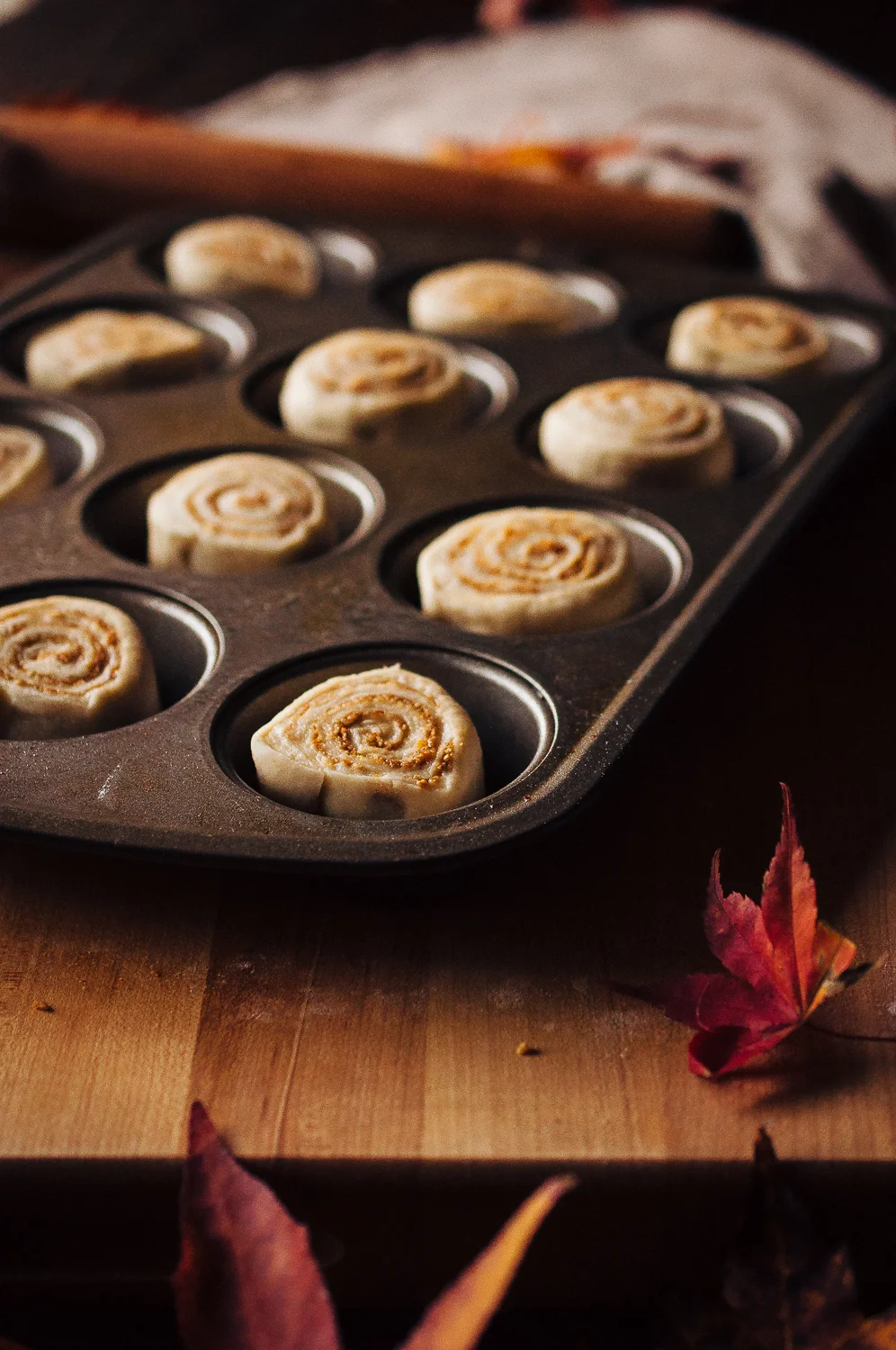
Now, these might look like cinnamon buns but they're kind of not.... I mean, they're a bun and they have cinnamon in them so maybe? But not in the traditional cinnamon bun way. These are flakey and buttery and crispy because the dough is basically croissant dough - lots and lots of buttery layers! And then the filling is, obviously, filled with hazelnuts and orange as well as cinnamon. And then what really makes them proper "morning buns" is that the whole thing is tossed in cinnamon sugar at the end. Really decadent. I mean, you could opt out of the cinnamon sugar dusting and call them cinnamon buns but then we'd just be splitting hairs, I guess. The point is, they're delicious.
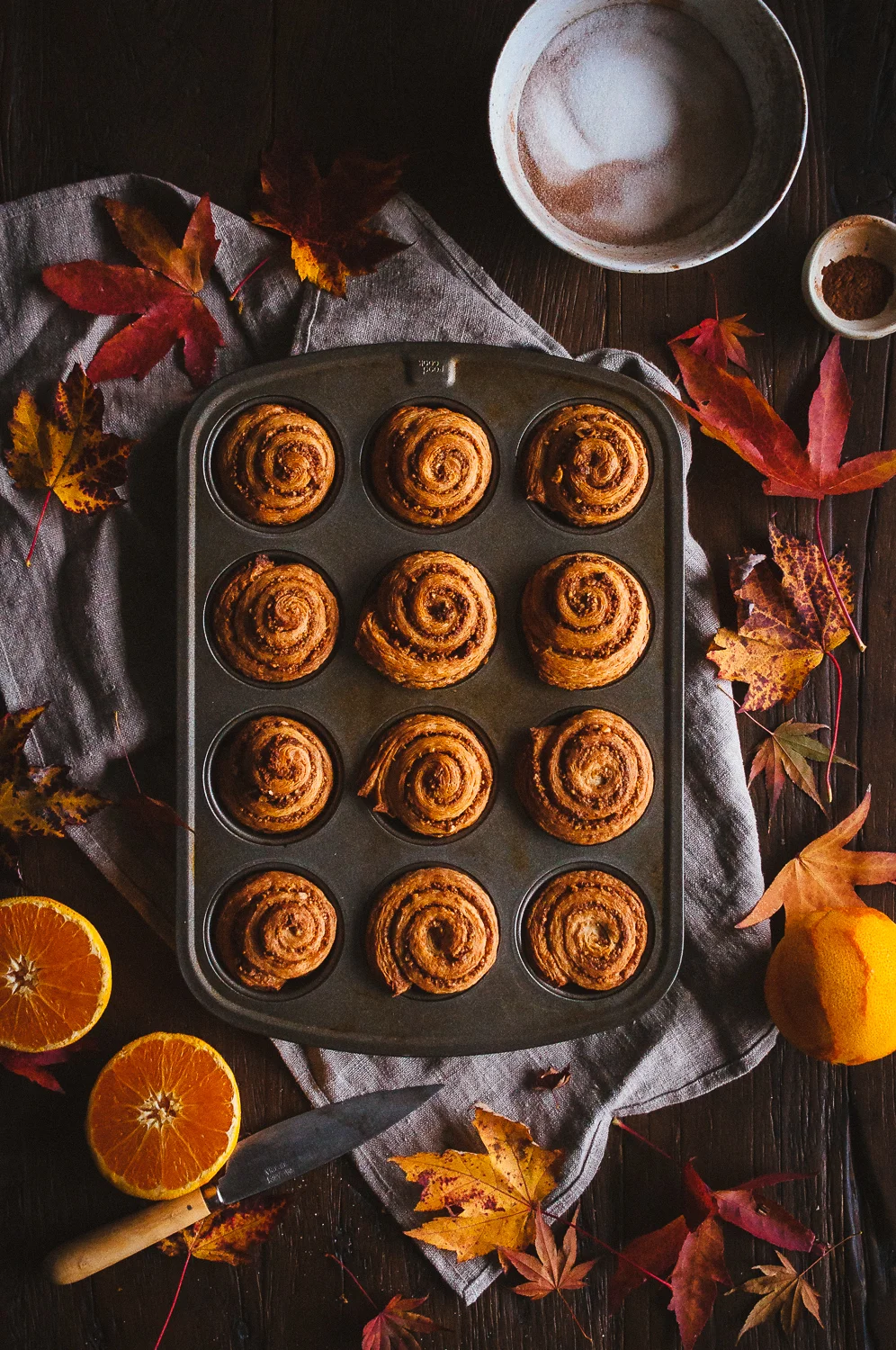
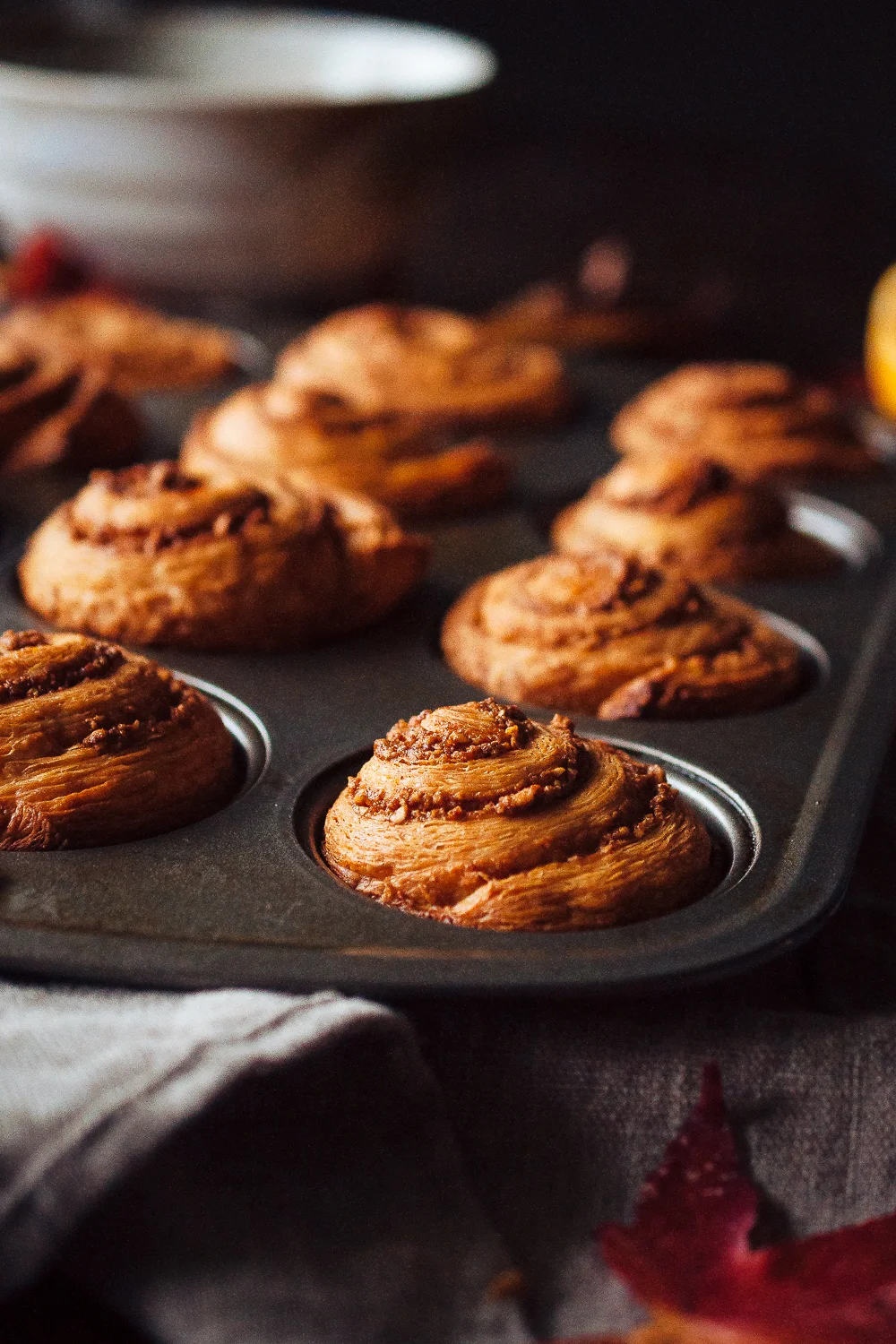
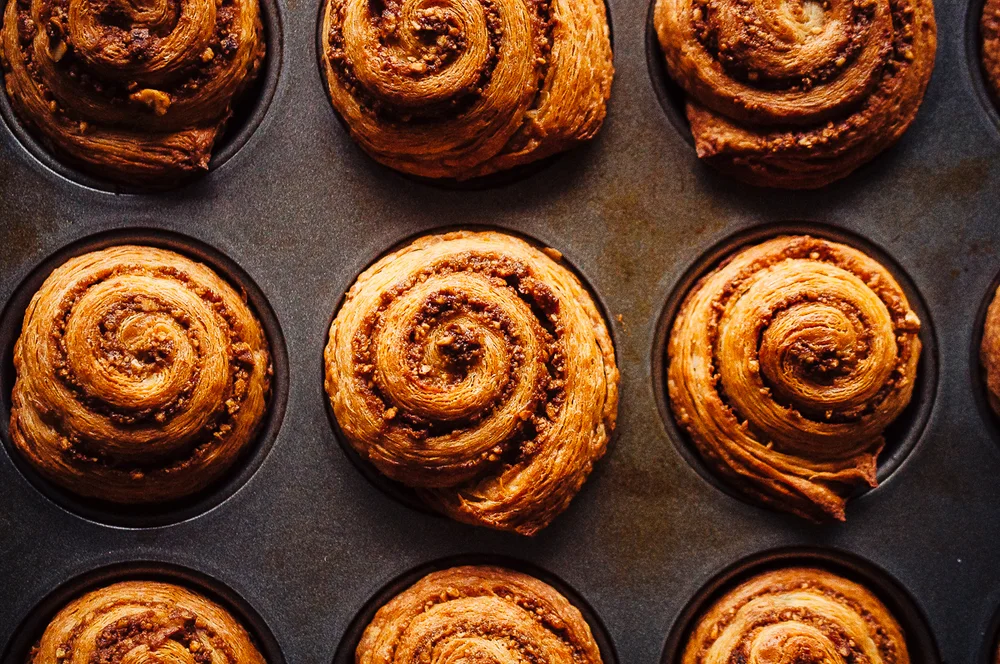
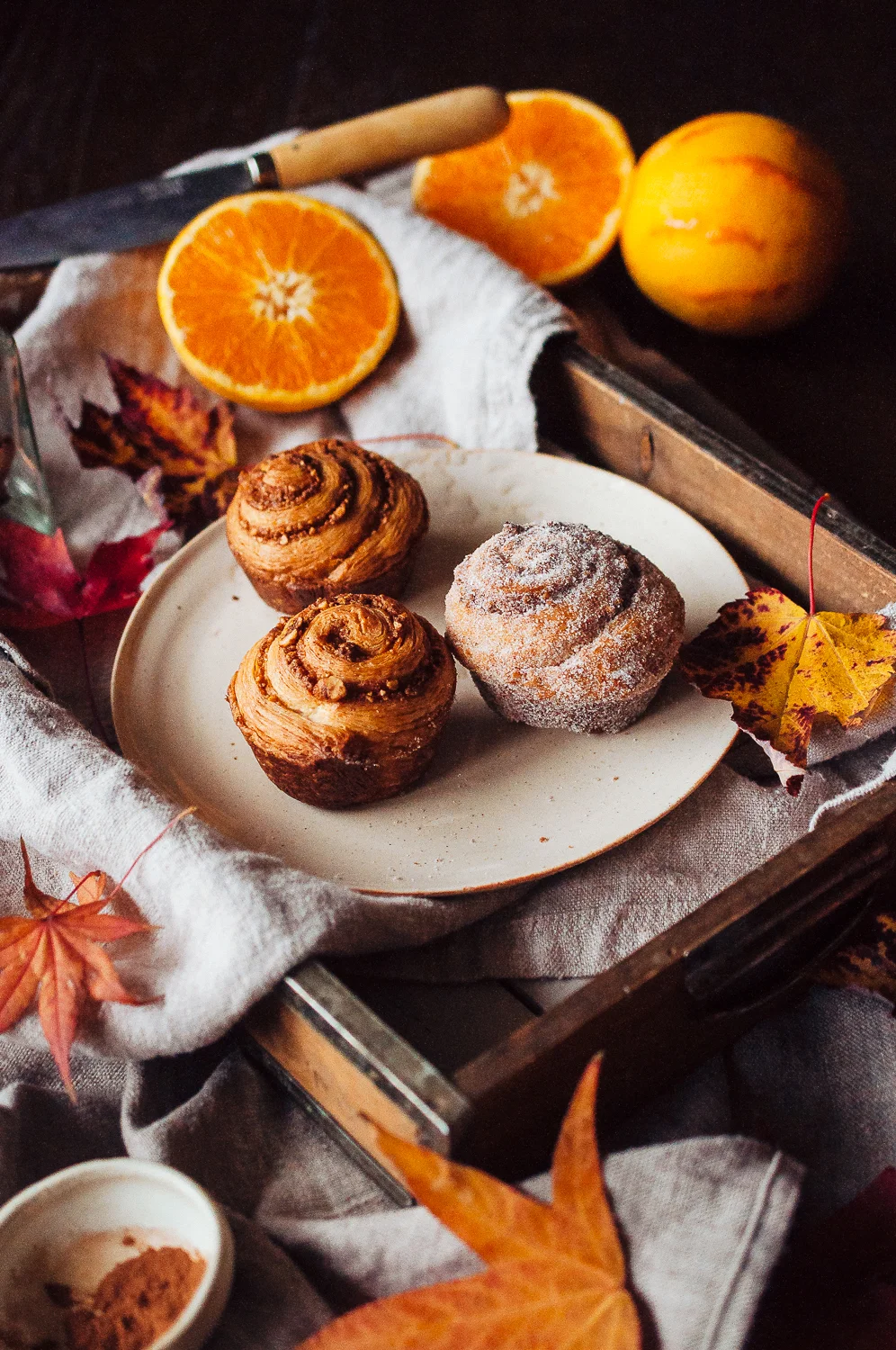
These would be an awesome weekend morning treat to surprise your family or friends or maybe just yourself (solo treat-fest is always fun) if you feel like going the extra step. You can make everything the night before and instead of proofing the buns in a warm spot, keep them in the fridge overnight. I can't exactly say how long they can stay in there because that depends on the temperature of your fridge and your dough and all that, but it's worth a shot! Just pop them in the oven and roll 'em in sugar in the morning. The smell alone will get everyone out of bed. Or just make you happy that you got out of bed to bake them.
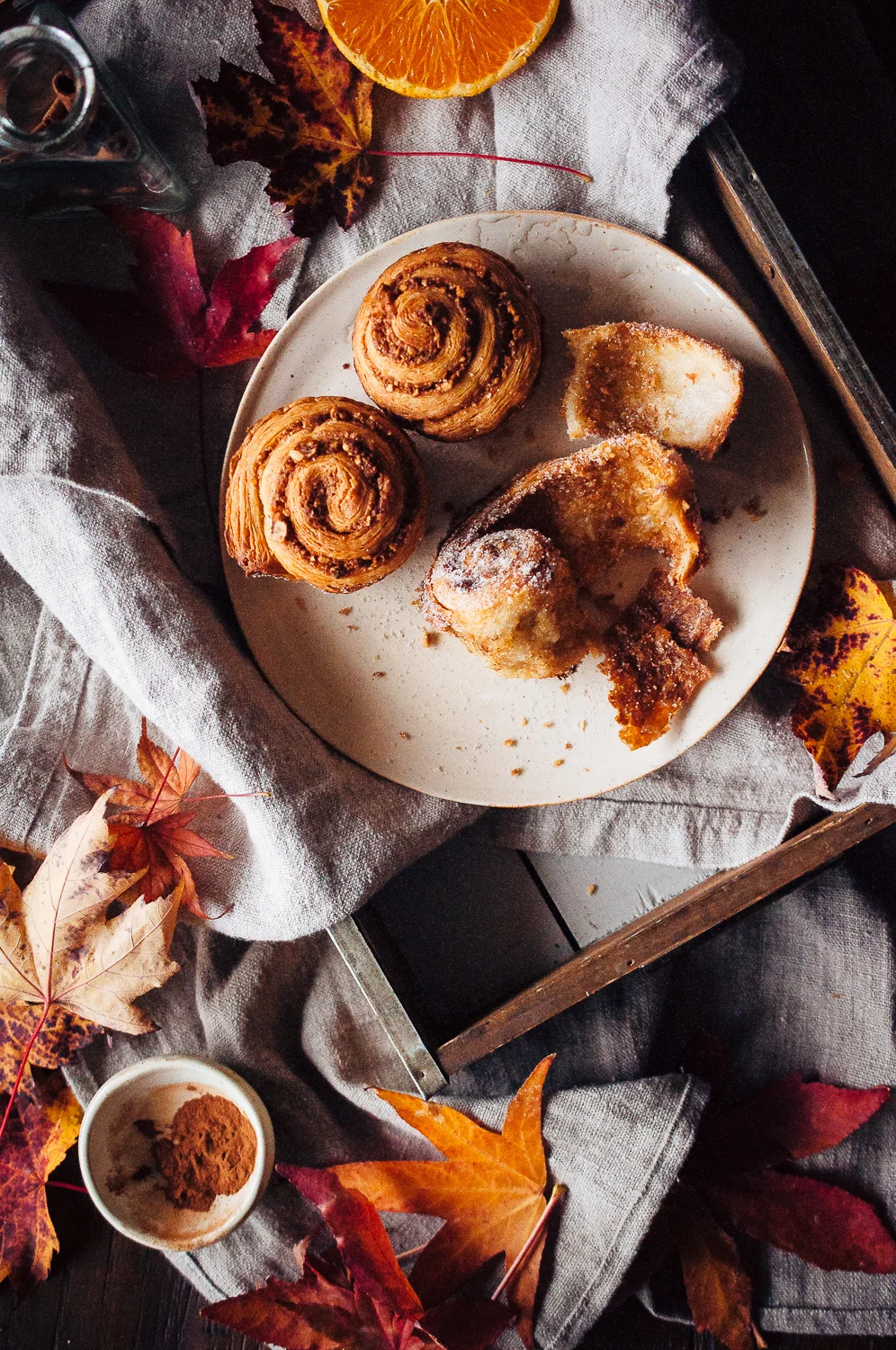
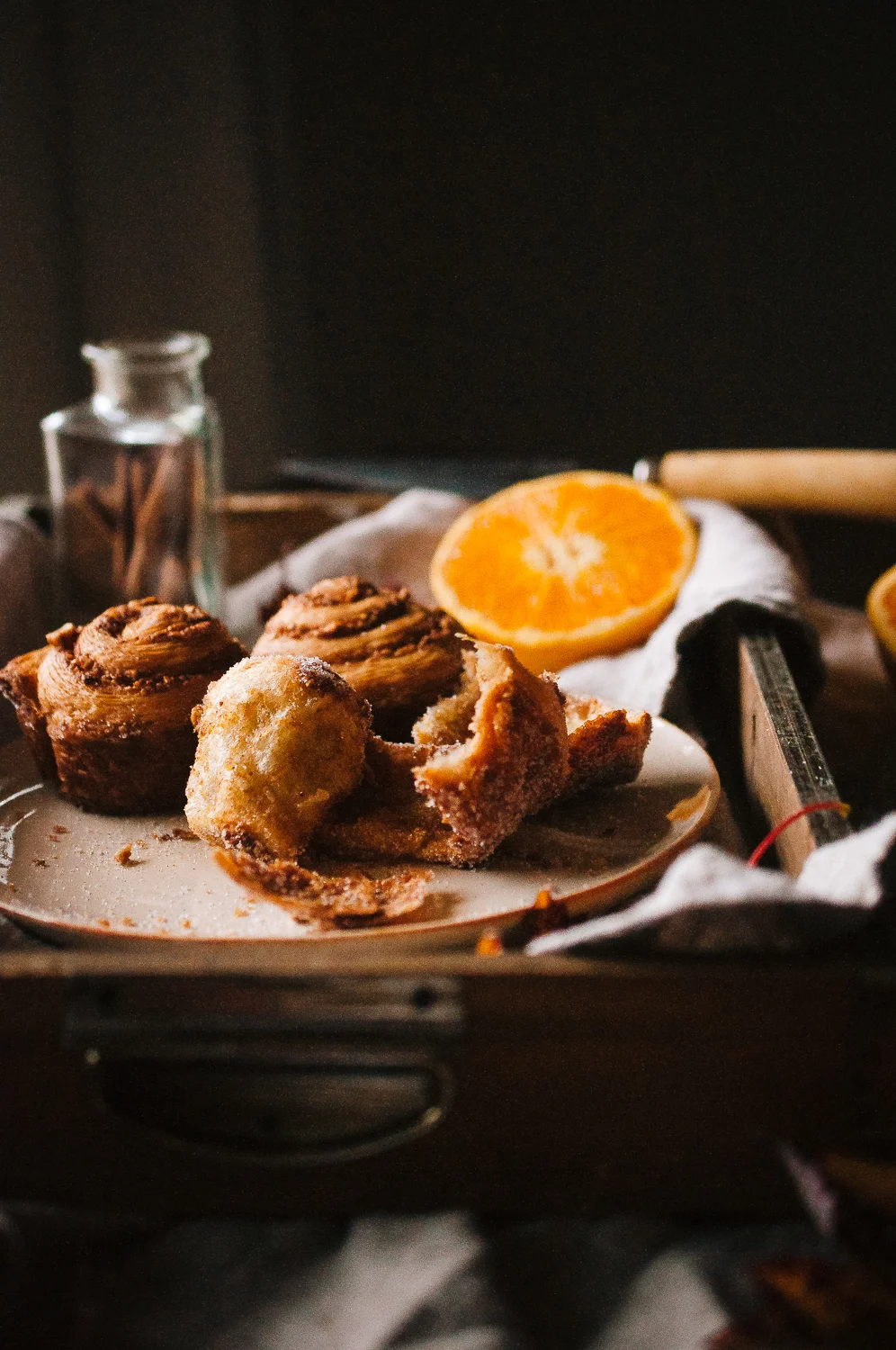
Cinnamon, Orange, and Hazelnut Morning Buns
Makes around 16-18 buns
Croissant dough
Recipe from The Modern Café
426 g all-purpose flour
10 g salt
51 g granulated sugar
8 g instant dried yeast
204 g water at 21 C
85 g unsalted butter, at room temperature
Butter block
212 g butter
Orange Hazelnut Filling
100 g hazelnuts
150 g unsalted butter, at room temperature
50 g brown sugar
1 teaspoon ground cinnamon
2 oranges, zested
Cinnamon sugar
200 g granulated sugar
2 teaspoons ground cinnamon
1/8 teaspoon vanilla powder
For the croissant dough, combine the flour, salt, sugar, and yeast in the bowl of a stand mixer fitted with the dough hook and give it a quick mix on the lowest setting to distribute all of the ingredients evenly. Add the water and mix until a shaggy dough is formed, about 3 to 4 minutes. Add the softened butter. Mix on low speed for 10 minutes, until full gluten development is achieved and the dough is smooth.
Remove the dough from the mixer and place on a silpat lined half sheet pan. Spread the dough into a rough rectangle the size of the pan, trying to make it even and flat. Cover the dough loosely with plastic wrap and leave at room temperature to ferment for 45 minutes.
While the dough is fermenting, make the filling. Preheat the oven to 325 F. Spread the hazelnuts on a parchment lined baking sheet and place in the oven for 10 to 12 mintues, until the nuts are golden brown and fragrant. Let them cool, then remove the skins by rubbing them in your hands. Using a food processor, grind the nuts into small pieces resembling cornmeal.
Combine the butter and sugar in the bowl of a stand mixer. Beat on medium speed until fluffy, then add the remaining ingredients and mix until combined. Remove from the mixer and keep at room temperature until ready to use.
Remove the plastic wrap. Using your palms, flatten the dough to release the large gas bubbles, but do not push all the air out of the dough. Make sure the dough is in all the corners of the half sheet pan and is even. Wrap tightly with plastic wrap and freeze for 45 minutes.
For the butter block, the ideal temperature for the butter is around 21 C. If the butter is too cold, place a piece of parchment underneath and on top of it and use a rolling pin to pound it down and make it malleable. Shape the butter into a rectangle the size of half a half sheet pan, making sure the edges and corners are sharp and the butter is even and flat. Depending on the temperature of your butter, you may need to keep it at room temperature or in the fridge, or a combination of the two, to keep it at 21 C.
Remove the dough from the freezer. Remove the plastic wrap and place the dough on a lightly floured work surface. Let the dough soften for 5 to 10 minutes until it is no longer rock hard, but not soft. Place the butter block on the right hand side of the dough, leaving about 3 cm of dough around the edges of the butter block. Fold the left hand side over, like closing a book, and pinch the seams together.
With the "spine" of the dough (think the spine of a book) on your left, roll the dough out vertically to around 15 cm. Turn the dough so the spine is now facing your stomach and roll it out to 30 cm. Make sure to keep the rectangular shape throughout the entire process. If the dough feels too soft at any point, place it in the fridge for 5 minutes. Do not leave it in the fridge for too long or the butter will become hard and will shatter when you roll it out.
For the first turn, fold the bottom third of the dough up as if you were folding a letter. Fold the top third down to cover the bottom third.
Turn the block 90 degrees so the dough resembles a book, with the opening on the right and the spine on the left. You will continue this pattern with each roll, and keeping the opening on the right will help you remember how to position the dough. You have completed your first turn: gently press a finger into the corner to mark it.
Let the dough relax for at least 15 minutes, either at room temperature or partially in the fridge, depending on the temperature of the dough. Be mindful of the butter temperature.
For the second turn, roll the dough out in the same way as you did before, fold it, mark it, and let it rest. Repeat for the third and fourth turn.
Spray two muffin tins with nonstick spray and set aside. Alternatively, if you have pastry rings that are 1.75 inches high and 3 inches in diameter, use them. They create a cleaner, more consistent pastry.
Roll out the dough to 15 by 30 cm once more. Using a sharp knife, cut the dough in half, creating two 15 by 15cm squares. Place one square on a silpat or parchment lined baking sheet and place in the fridge. If you don't plan on using the second square that day, wrap tightly in a double layer of plastic wrap and keep it in the fridge for up to 1 day.
Roll out the remaining square to 30 by 22 cm, about 1 cm thick. With the long size facing you, gently spread half of the filling on the dough, leaving a 1 cm border at the bottom with no filling. Brush this bare part with water. Starting from the long size farthest from you, roll the dough tightly towards you, making sure it is even and there are no air pockets. The strip of bare dough with water on it will seal the log and ensure it doesn't unroll.
Repeat with the remaining square of dough.
Using a large sharp knife, cut the log into 4 cm portions. Place them into the muffin tin and loosely cover with plastic wrap.
Place in a warm, humid environment to proof. I set mine on the bathroom counter and put the shower on the hottest temperature for 2 minutes, then turn it off and close the door. The temperature should be around 24 C, but not too much hotter or the butter will melt out of your dough.
Proof the dough for about 1 hour, until they have doubled in size. In the meantime, preheat the oven to 350 F. If your pastries are ready but you are not ready to bake them yet, place them in the fridge. Do not let them stay in the fridge for too long, as they continue to proof (very slowly) in the fridge and will still overproof if you leave them for too long.
Make the cinnamon sugar at this point. Simply stir together the sugar and cinnamon in a large wide bowl.
When the dough is ready, place in the oven and bake for 25 to 30 minutes, rotating the pan halfway through, until they are golden brown. Remove from the oven and place the muffin tin on a cooling rack.
Once the buns are a little warm but no longer hot, remove them from the muffin tins and toss them in the cinnamon sugar if desired.
The morning buns are best eaten the same day.





















